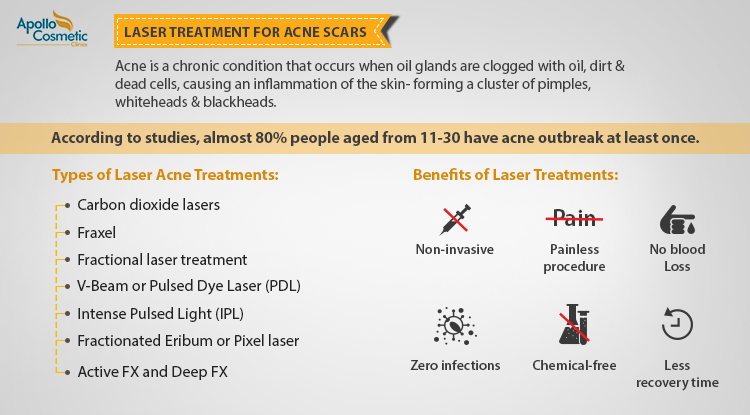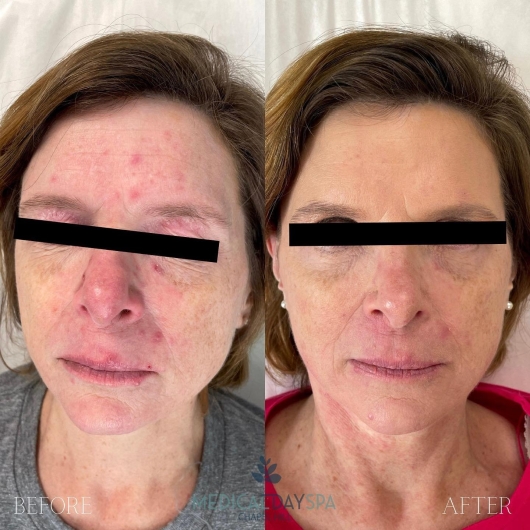The 9-Minute Rule for Acne Scars
The 9-Minute Rule for Acne Scars
Blog Article
Not known Details About Acne Scars
Table of ContentsTop Guidelines Of Acne ScarsThe 4-Minute Rule for Acne ScarsGet This Report on Acne ScarsNot known Incorrect Statements About Acne Scars The Greatest Guide To Acne Scars
Elevated acne scars occur when the body produces way too much collagen and create a noticeable bump. As we age, acne scars end up being much more noticeably due to the fact that our skin loses collagen. Some individuals are extra most likely to see marks than others. According to Dr. Garvey, the danger raises when: A person has inflammatory acne such as acne cysts.A person hold-ups treatment for inflammatory acne. The longer you wait to look for treatment for acne, the better the risk of scarring. A person chooses at, presses or stands out acne. When popping a pimple, you push microorganisms deeper into pore. If we didn't require an additional factor why not to pop a pimple, understand that a mark might be the straight result of your activities.
Your hereditary make-up plays a large duty in how much acne, and what kind of acne you might create. As we said earlier, there is no magic active ingredient to take acne scars away in the blink of an eye. There are therapies readily available that aid reduce the scarring in time.
, a skin doctor may raise the mark, bringing it closer to the surface of the skin to make it much less noticeable. Resurfacing eliminates layers of the skin, which enables the body to generate new skin cells.
The Definitive Guide to Acne Scars
Lasers and other light treatments can treat elevated scars securely and successfully. (PDL) can assist decrease the itch and discomfort, lessen shade, and flatten a raised scar.
No unfavorable events were reported. After 3 needling treatments, there was improvement in the appearance of acne marks in time contrasted with the control team, with very little pain reported. Identifier: NCT00974870 Acne scarring has actually been related to considerable mental effects. Treatment of acne scarring stays a healing difficulty, with treatment strategies that include a series of feasible alternatives.
Nonablative and ablative lasers can be used to either remove or pierce skin in a penalty identify pattern, with resulting neocollagenesis; only a portion of the skin is treated with each therapy, and a collection of treatments are called for to deal with the entire affected surface. It has actually been suggested that neocollagenesis and renovation of acne scars can additionally be accomplished utilizing needle rollers, which utilize a mechanical, macroscopic approach to generate tiny skin and facial openings.
Things about Acne Scars
Like repaint rollers, such tools can be relocated back and forth along the skin. Needling as a possible treatment for acne scarring was introduced by Camirand and Doucet, who explained usage of a tattoo weapon to abrade acne marks.
At each of these sees, needling was performed on the study treatment location, and topical anesthetic was just rubbed right into the control area. Digital photos and damaging occasions (eg, infection, prolonged erythema, long term edema, serosanguineous drain, blood loss, ulceration, erosion, and pigmentation), including their duration, resolution, strength, connection to the research study procedure, and any type of alleviative activities taken, were tape-recorded before each treatment.

Discomfort level was recorded based on a 10-point aesthetic analog scale after the procedure. Quickly the original source after each treatment, mild hand-operated pressure with gauze was made an application for 5 mins to control determine blood loss and serum secretion. The skin was soaked with saline swabs for an hour to promote hydration while the get more individuals were enlightened concerning the need for home care.
Acne Scars for Beginners
The device was then more cleaned by gas sterilization, saved in a closed plan, and classified with the participant's name and the very first therapy date on the box until the next treatment. This sanitation process was followed to ensure a high level of infection control in this research setting. The primary end result step was the quantitative worldwide scarring grading system, developed by Goodman and Baron.
2 blinded skin specialists (S.H. and M.P.) independently rated individuals' acne marks based on typical digital pictures obtained at baseline and at the 3-month and 6-month follow-up brows through. Required contract was made use of to resolve ratings. Provided that this was a very early pilot test, we considered it appropriate to consider acne scars jointly, not separately, by numerous morphologic subtypes (eg, rolling, boxcar, ice pick, and more).
and M.P.) did not join randomization or treatment and consequently had the ability to be blinded pertaining to task. Modifications in mean mark scores from standard to 3 and 6 months, respectively, were calculated for the treatment and control arms. Repeated-measures evaluation of variance with pairwise comparisons with Sidak adjustment were executed to test whether the mark rating differed on treatment type, time, or the interaction between the 2.
The Wilcoxon signed rank test was used to examine whether the difference in general acne scar appearance was linked with therapy type. Twenty individuals consented, and 5 dropped out before the first therapy.
Facts About Acne Scars Uncovered
The needling treatment was not especially painful. Pain rankings enhanced slightly over time (P =.01), with week 4 discomfort scores (mean, 1.75; 95% CI, 0.90-2.60) considerably higher than week 2 (mean, 0.78; 95% CI, 0.40-1.20) and week 0 (mean, 0.71; 95% CI, 0.40-1.00).
When asked to estimate the discomfort experienced during and in the days after their treatment, participants frequently reported no discomfort (acne scars). Most individuals were very pleased with their treatment, replied indeed when asked if they would certainly do this treatment once again to deal with added scars, and said they would suggest needling to their pals
Light short-term erythema and edema, which were not classified as adverse occasions and therefore not formally tracked, were consistently observed by the detective (M.A.) and reported by participants after treatments. This research study exposes some enhancement in acne marks after a collection of 3 treatments of needling. There is a statistically substantial enhancement in such marks in the therapy team from standard to 6 months and no significant improvement during this period in the control group.

Report this page